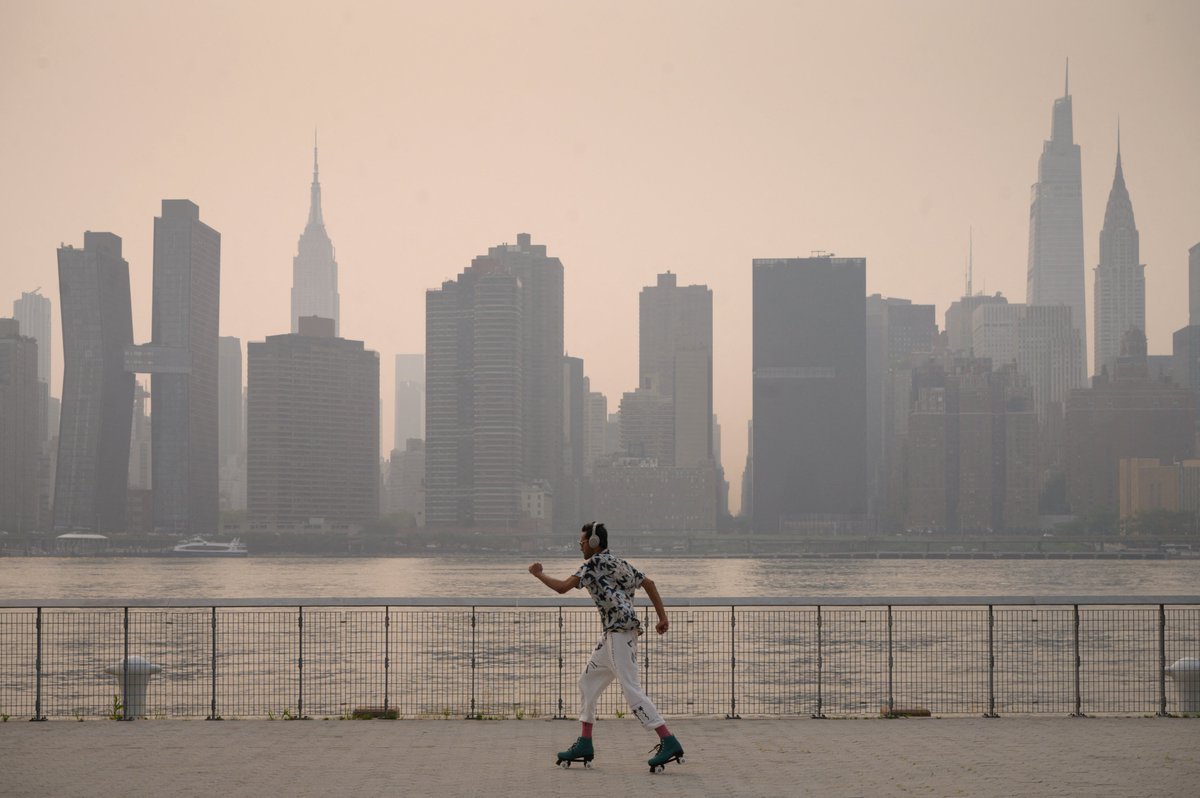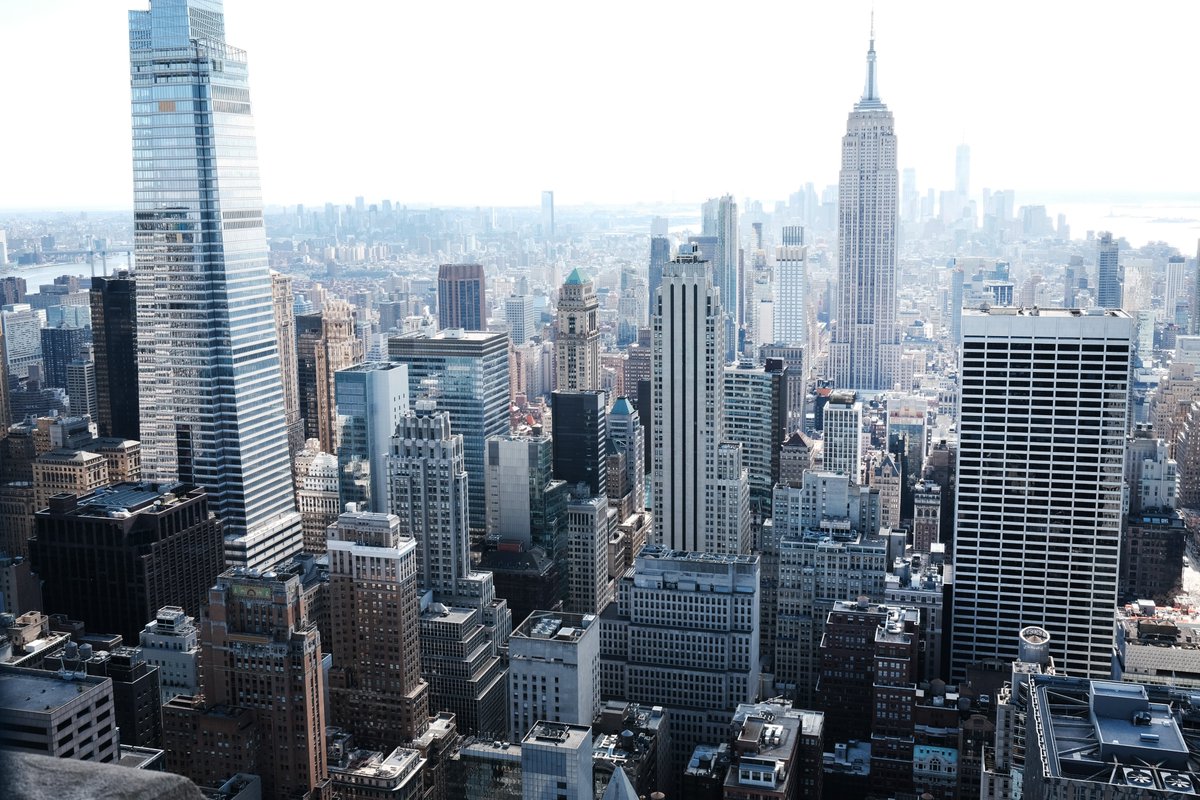
New York is emerging as one of the world's most resilient cities in the wake of the pandemic.
Its success is more than just its size — it’s the Big Apple’s model of urbanism that offers something no other American metropolis can match trib.al/0SEiY77
Its success is more than just its size — it’s the Big Apple’s model of urbanism that offers something no other American metropolis can match trib.al/0SEiY77
New York was the first big city in the U.S. to be hit hard by Covid-19.
Immediately, people began predicting the pandemic would trigger a backlash against dense urban living. A wave of murder and violence followed the 2020 Black Lives Matter protests trib.al/0SEiY77
Immediately, people began predicting the pandemic would trigger a backlash against dense urban living. A wave of murder and violence followed the 2020 Black Lives Matter protests trib.al/0SEiY77

For some cities like San Francisco, the exodus seems real.
But more people moved to the New York City metropolitan area during the Covid pandemic than moved out, according to an analysis of cell phone data.
Young people are especially eager to move in trib.al/0SEiY77
But more people moved to the New York City metropolitan area during the Covid pandemic than moved out, according to an analysis of cell phone data.
Young people are especially eager to move in trib.al/0SEiY77

How did New York City remain such a popular destination despite all its formidable challenges?
Economists’ go-to explanations are called agglomeration and industrial clustering effects: big cities tend to stay big, and rich cities tend to stay rich trib.al/0SEiY77
Economists’ go-to explanations are called agglomeration and industrial clustering effects: big cities tend to stay big, and rich cities tend to stay rich trib.al/0SEiY77

New York is the home of many high-value industries, among them finance and publishing.
Those industries keep a large, well-educated population of knowledge workers in the area, which draws in other companies — most recently, tech firms
trib.al/0SEiY77
Those industries keep a large, well-educated population of knowledge workers in the area, which draws in other companies — most recently, tech firms
trib.al/0SEiY77

For New York to go into a sustained decline would take a massive catastrophe — something big enough to remove the nucleus of companies and skilled workers completely.
Covid-19 simply wasn’t that. Neither was 9/11 trib.al/0SEiY77
Covid-19 simply wasn’t that. Neither was 9/11 trib.al/0SEiY77

Such population declines have happened.
The Detroit area, for example, has been bleeding population for decades:
The Detroit area, for example, has been bleeding population for decades:

New York City towers over all American cities by population density. The city has more than 28,000 inhabitants per square mile.
Second-place San Francisco has only about 18,000 trib.al/0SEiY77
Second-place San Francisco has only about 18,000 trib.al/0SEiY77

New York City's population density allows a kind of urban living that nowhere else in America can offer on such a large scale:
🌆Walkable streets
🫂Serendipitous meetings
🛍️Vibrant downtown retail areas
trib.al/0SEiY77
🌆Walkable streets
🫂Serendipitous meetings
🛍️Vibrant downtown retail areas
trib.al/0SEiY77

New York’s unique culture is its other big draw. By some measures, it’s the most diverse city in the world.
It’s also safe for an American city and has a murder rate well below the national average trib.al/0SEiY77
It’s also safe for an American city and has a murder rate well below the national average trib.al/0SEiY77

Density also enables New York to have by far the best metro rail system in the country. The New York City Subway is ahead of anything Chicago or Boston has to offer.
Being able to get most places in the city by train is convenient and liberating trib.al/0SEiY77
Being able to get most places in the city by train is convenient and liberating trib.al/0SEiY77

New York City is plagued by an affordability crisis, and its excessive construction costs and dilapidated infrastructure are legendary.
To maintain its density and functionality, the city will have to learn how to build things again trib.al/0SEiY77
To maintain its density and functionality, the city will have to learn how to build things again trib.al/0SEiY77

As long as New York remains America’s most functional large city, it will continue to exert an irresistible magnetism.
Only if another U.S. city decides to convert itself into a hyper-dense train-powered metropolis will New York have any real competition trib.al/0SEiY77
Only if another U.S. city decides to convert itself into a hyper-dense train-powered metropolis will New York have any real competition trib.al/0SEiY77

• • •
Missing some Tweet in this thread? You can try to
force a refresh















